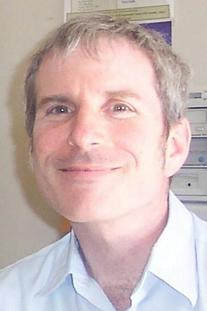
GET FREE SHIPPING!
Use Promo Code SHIPFREE at Step 4 of checkout.
*Free Shipping only applicable to US orders. Restrictions apply.
Calculus: Early Transcendentals Multivariable

Fourth Edition©2019 Jon Rogawski; Colin Adams; Robert Franzosa
ISBN:9781319270377
Take notes, add highlights, and download our mobile-friendly e-books.
ISBN:9781319055929
Read and study old-school with our bound texts.
ISBN:9781319379490
This package includes Achieve and Paperback.
We see teaching mathematics as a form of story-telling, both when we present in a classroom and when we write materials for exploration and learning. The goal is to explain to you in a captivating manner, at the right pace, and in as clear a way as possible, how mathematics works and what it can do for you. We find mathematics to be intriguing and immensely beautiful. We want you to feel that way, too.
E-book
Read online (or offline) with all the highlighting and notetaking tools you need to be successful in this course.
Learn MoreTable of Contents
Chapter 1: Precalculus Review
1.1 Real Numbers, Functions, and Graphs
1.2 Linear and Quadratic Functions
1.3 The Basic Classes of Functions
1.4 Trigonometric Functions
1.5 Inverse Functions
1.6 Exponential and Logarithmic Functions
1.7 Technology: Calculators and Computers
Chapter 2: Limits
2.1 The Limit Idea: Instantaneous Velocity and Tangent Lines
2.2 Investigating Limits
2.3 Basic Limit Laws
2.4 Limits and Continuity
2.5 Indeterminate Forms
2.6 The Squeeze Theorem and Trigonometric Limits
2.7 Limits at Infinity
2.8 The Intermediate Value Theorem
2.9 The Formal Definition of a Limit
Chapter 3: Differentiation
3.1 Definition of the Derivative
3.2 The Derivative as a Function
3.3 Product and Quotient Rules
3.4 Rates of Change
3.5 Higher Derivatives
3.6 Trigonometric Functions
3.7 The Chain Rule
3.8 Implicit Differentiation
3.9 Derivatives of General Exponential and Logarithmic Functions
3.10 Related Rates
Chapter 4: Applications of the Derivative
4.1 Linear Approximation and Applications
4.2 Extreme Values
4.3 The Mean Value Theorem and Monotonicity
4.4 The Second Derivative and Concavity
4.5 L’Hôpital’s Rule
4.6 Analyzing and Sketching Graphs of Functions
4.7 Applied Optimization
4.8 Newton’s Method
Chapter 5: Integration
5.1 Approximating and Computing Area
5.2 The Definite Integral
5.3 The Indefinite Integral
5.4 The Fundamental Theorem of Calculus, Part I
5.5 The Fundamental Theorem of Calculus, Part II
5.6 Net Change as the Integral of a Rate of Change
5.7 The Substitution Method
5.8 Further Integral Formulas
Chapter 6: Applications of the Integral
6.1 Area Between Two Curves
6.2 Setting Up Integrals: Volume, Density, Average Value
6.3 Volumes of Revolution: Disks and Washers
6.4 Volumes of Revolution: Cylindrical Shells
6.5 Work and Energy
Chapter 7: Techniques of Integration
7.1 Integration by Parts
7.2 Trigonometric Integrals
7.3 Trigonometric Substitution
7.4 Integrals Involving Hyperbolic and Inverse Hyperbolic Functions
7.5 The Method of Partial Fractions
7.6 Strategies for Integration
7.7 Improper Integrals
7.8 Numerical Integration
Chapter 8: Further Applications of the Integral
8.1 Probability and Integration
8.2 Arc Length and Surface Area
8.3 Fluid Pressure and Force
8.4 Center of Mass
Chapter 9: Introduction to Differential Equations
9.1 Solving Differential Equations
9.2 Models Involving y=k(y-b)
9.3 Graphical and Numerical Methods
9.4 The Logistic Equation
9.5 First-Order Linear Equations
Chapter 10: Infinite Series
10.1 Sequences
10.2 Summing an Infinite Series
10.3 Convergence of Series with Positive Terms
10.4 Absolute and Conditional Convergence
10.5 The Ratio and Root Tests and Strategies for Choosing Tests
10.6 Power Series
10.7 Taylor Polynomials
10.8 Taylor Series
Chapter 11: Parametric Equations, Polar Coordinates, and Conic Sections
11.1 Parametric Equations
11.2 Arc Length and Speed
11.3 Polar Coordinates
11.4 Area and Arc Length in Polar Coordinates
11.5 Conic Sections
Chapter 12: Vector Geometry
12.1 Vectors in the Plane
12.2 Three-Dimensional Space: Surfaces, Vectors, and Curves
12.3 Dot Product and the Angle Between Two Vectors
12.4 The Cross Product
12.5 Planes in 3-Space
12.6 A Survey of Quadric Surfaces
12.7 Cylindrical and Spherical Coordinates
Chapter 13: Calculus of Vector-Valued Functions
13.1 Vector-Valued Functions
13.2 Calculus of Vector-Valued Functions
13.3 Arc Length and Speed
13.4 Curvature
13.5 Motion in 3-Space
13.6 Planetary Motion According to Kepler and Newton
Chapter 14: Differentiation in Several Variables
14.1 Functions of Two or More Variables
14.2 Limits and Continuity in Several Variables
14.3 Partial Derivatives
14.4 Differentiability, Tangent Planes, and Linear Approximation
14.5 The Gradient and Directional Derivatives
14.6 The Chain Rule
14.7 Optimization in Several Variables
14.8 Lagrange Multipliers: Optimizing with a Constraint
Chapter 15: Multiple Integration
15.1 Integration in Two Variables
15.2 Double Integrals Over More General Regions
15.3 Triple Integrals
15.4 Integration in Polar, Cylindrical, and Spherical Coordinates
15.5 Applications of Multiple Integrals
15.6 Change of Variables
Chapter 16: Line and Surface Integrals
16.1 Vector Fields
16.2 Line Integrals
16.3 Conservative Vector Fields
16.4 Parametrized Surfaces and Surface Integrals
16.5 Surface Integrals of Vector Fields
Chapter 17: Fundamental Theorems of Vector Analysis
17.1 Green’s Theorem
17.2 Stokes’ Theorem
17.3 Divergence Theorem
 Canada
Canada



